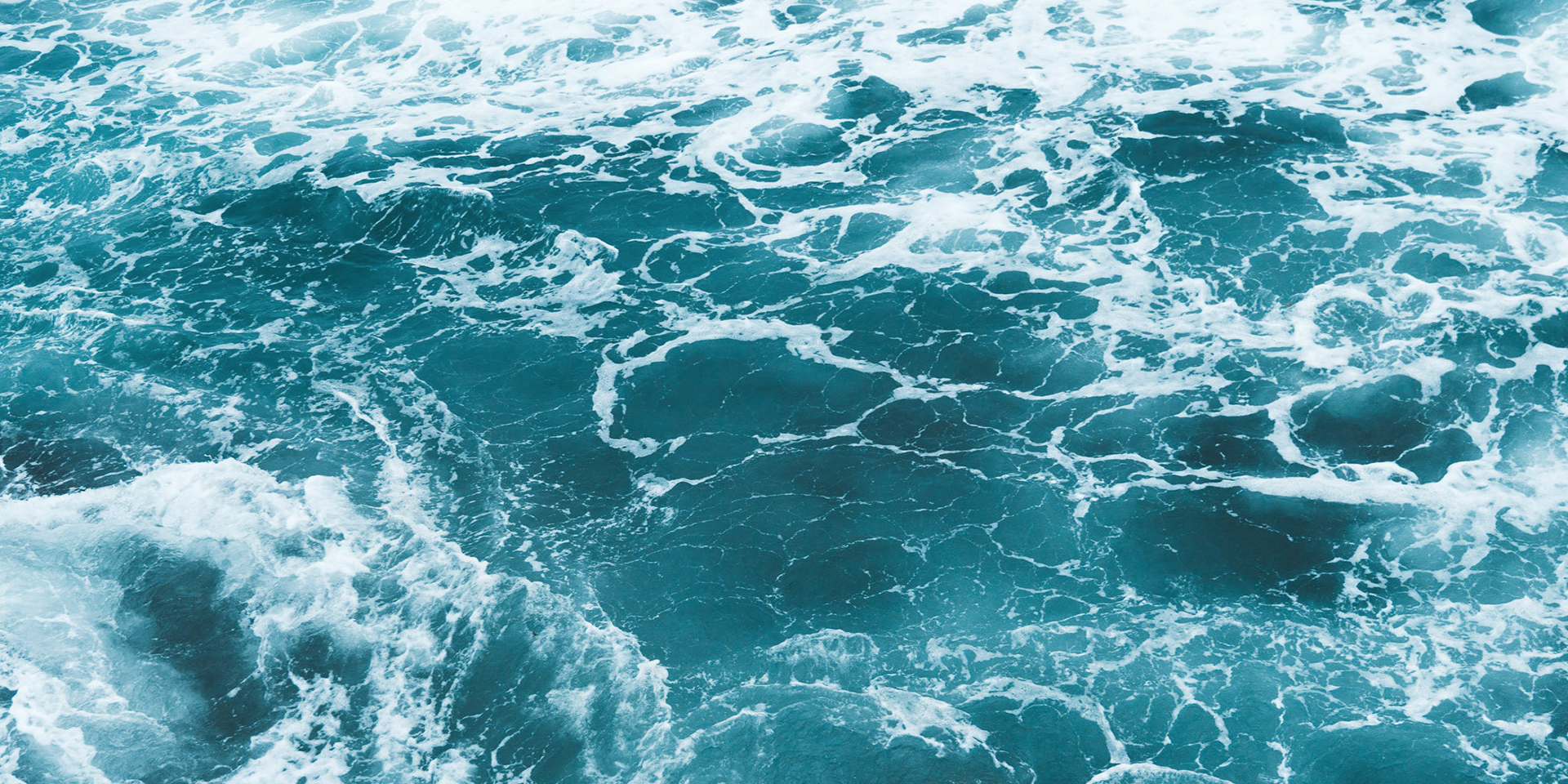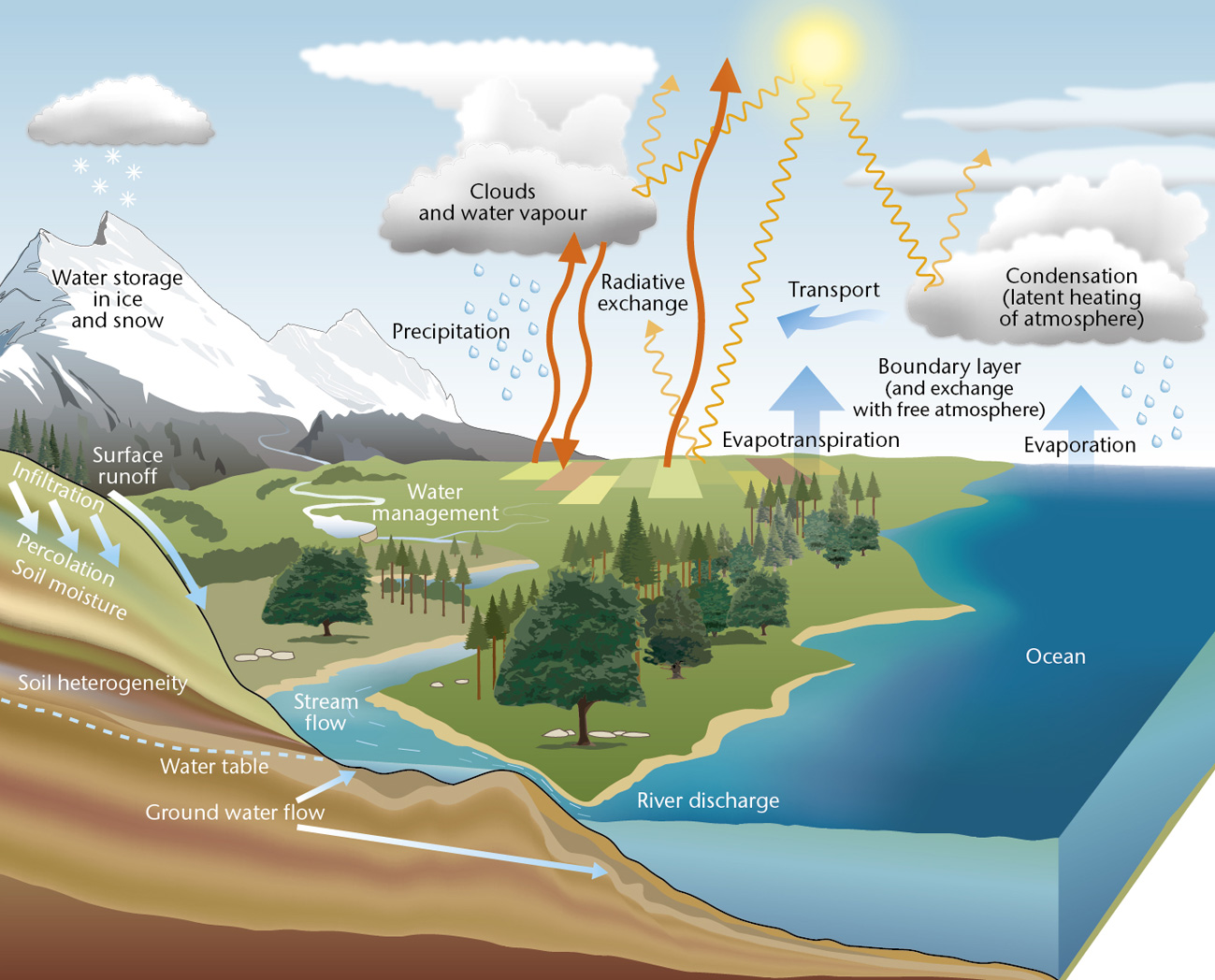In this blog post, we’ll learn about the global water cycle, which refers to the way that water moves around the world, and the implications that this can have for water security in different regions.
Throughout February we’ve been focusing on the climate theme of ‘water security’. To understand water security, we first need to understand the way that water travels around the Earth.

In short, the ‘water cycle’ (also known as the hydrological cycle), refers to the continuous process whereby water is transferred between the surface of the earth and the atmosphere.
When the sun shines on water on the Earth’s surface, the heat of the sun warms the water, turning it into an invisible gas – water vapour. This process, the changing of water into a gas, is called evaporation. Water vapour enters the atmosphere in other ways too; through transpiration, (when water vapour is released from plants) and sublimation (when ice or snow turn into water vapour without melting into water first).
Water vapour rises into the sky. The further you move up and away from the earth’s surface, the colder the temperature gets. Therefore, when it gets high enough, the water vapour cools and changes back into tiny water droplets. This change is called condensation which is the opposite of evaporation.

Clouds are made up of tiny water droplets and when condensation occurs in the sky, clouds form and grow. When water droplets bump into one another, they stick together and increase in size. They continue to grow until they’re too heavy and begin to fall as rain, snow, sleet or hail. The water droplets even continue to grow as they bump into one another on their journey from the cloud to the ground. Every single raindrop that reaches the ground is made up of 1 million of the original tiny water droplets!

Rain clouds pictured over boats in the sea at sunrise in Cornwall, UK. Image: Shutterstock.
When precipitation occurs over land, some water seeps into the ground as groundwater, a small amount is taken up by plants and animals, and the rest will return to rivers and streams as surface run-off to begin its journey back to the oceans. From here the whole process begins again.
The water cycle is happening all around us, all the time. It keeps water moving between the ground and the sky, providing the water needed for plants, animals and people to survive.
Water vapour is carried around the planet by the winds, with some regions such as tropical rainforests receiving much more water vapour and rainfall than other regions such as deserts. In places where water demand from human societies is greater than water availability, this can lead to a lack of water security.
Climate change, the water cycle and water security
Recent IPCC reports have confirmed that human activities are influencing climate change, which is resulting in more frequent and extreme weather events, with instances of intense rainfall and extreme drought both expected to increase.
Climate change is already affecting the water cycle. Globally, on average, climate change leads to higher evaporation and more rainfall. Heavy rainfall in particular is becoming even more intense, which can lead to a greater risk of flooding.
On a local scale, these changes in the water cycle are much more complex, with some regions getting drier and others getting wetter. For example, regions that are already dry, such as many countries surrounding the Mediterranean, are likely to become more so due to climate change. This increases the likelihood that existing problems such as concerns over water security will worsen.
Met Office consultancy for water management
In addition to providing weather forecasting and climate science services, we work with companies in the water industry to assist in the management of water resources by supporting strategies for effective resilience, efficiency and forward planning. This can include investigations into instances of drought and climate change consultancy to enable companies to overcome challenges to water security.
Learn more about our water consultancy services on our website.


